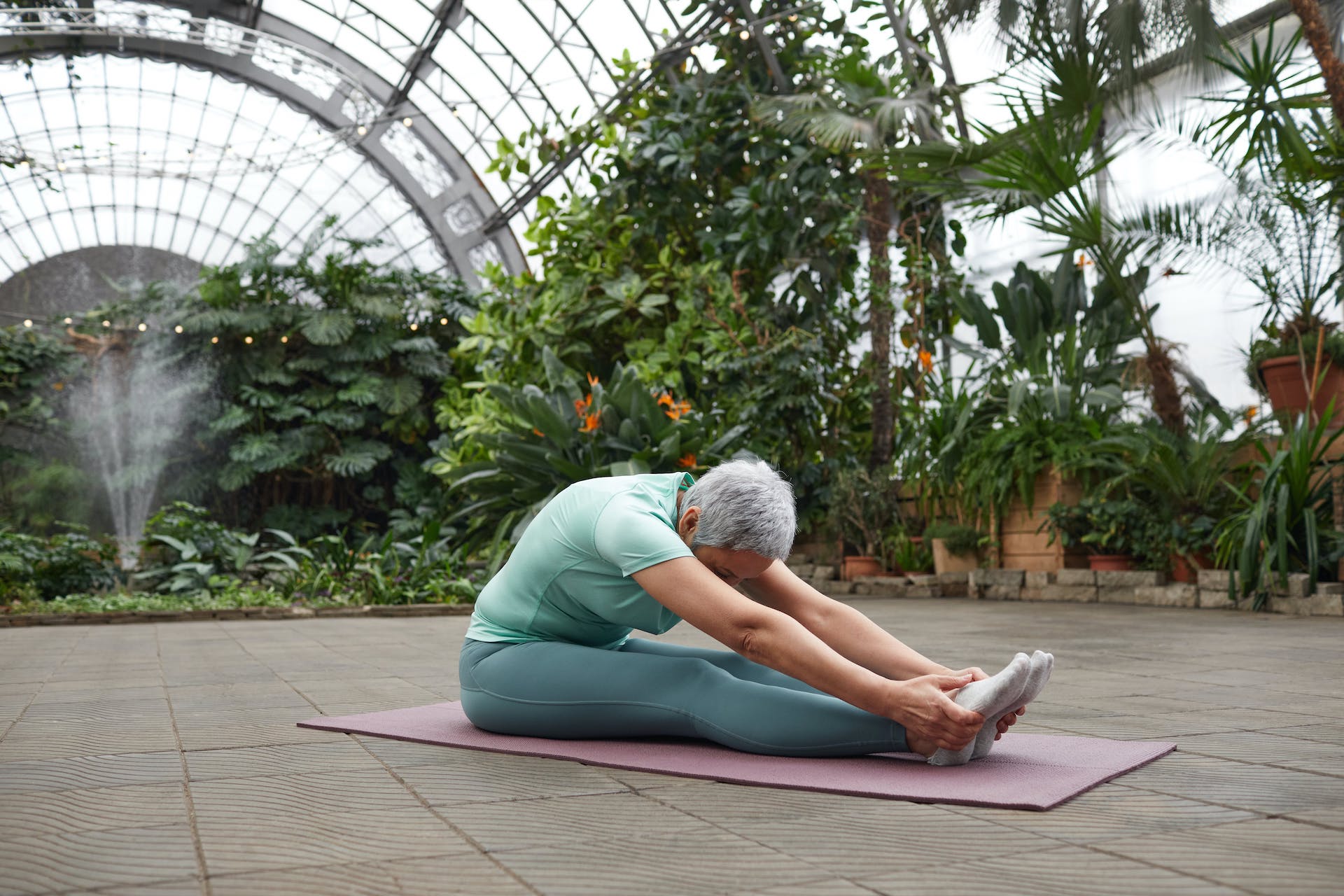Are you back at work and feeling tension and stress building up already?
Are you worried your sedentary workstyle is causing you to put on weight?
Has your health practitioner suggested you need to change how you work because your blood pressure is too high and your level of fitness too low?
If you’ve set the intention to get fitter and stay healthier this year there’s one thing that can make all the difference.
Cats do it really well. Our dogs do it every morning and I try to do it several times a day in different locations.
It’s called stretching.
While stretching is something you may associate with warm-ups prior to exercising, it’s also good for your mental fitness.
Stretching for your mental wellbeing.
A good stretch is great for reducing stress and muscular tension.
I’ve only been back at work for a week following the Christmas break, and I’ve already noticed my energy flagging and my mind going into overload. Eeek!
A small study found that implementing a short program of stretching exercises helped alleviate symptoms of anxiety, physical pain and exhaustion while improving levels of vitality, mental health, general health and flexibility.
Not bad for a daily 10-minute intervention over a 3-month period.
How does it work?
It relaxes your muscles.
If you’ve been working hard at your desk for a few hours, taking a quick stretch relaxes those muscles that have been gradually tightening up.
It’s been shown that people who do regular static stretches activates the parasympathetic nervous system that reduces the production of the stress hormone cortisol. If you’re prone to stress-related headaches from working at a desktop computer or find your back aching, scheduling a regular stretch across your day can work wonders to put you in a more relaxed and less stressed state. Increased attention and increased productivity being the bonus.
It reduces muscle pain and soreness.
I gave up wearing heels several years ago. I got fed up with sore feet and squashed toes. Just as I now only wear flats, sneakers, and low heels for a smidge of elevation, I also know that stretching a couple of times a day helps reduce the back pain that I get from prolonged standing or sitting. Focusing on my posture and checking that I haven’t ended up slumped in my chair keeps me happy and pain-free. Try a couple of the suggested stretches at the end of this article and see what that does for your demeanour and body confidence.
Using stretching as part of your daily physical activity regime keeps you moving and working your muscles and that muscle strength as you get older is terribly important for your physical health, your cognition and mood.
It promotes feeling calm.
There’s nothing worse than beavering away while horribly aware of the time slipping away and you’ve got a deadline to meet. Yikes! Here a brief stretch accompanied by some slow breaths calms the mind and keeps you in the present. This helps you to reach that delicious state of flow more readily, where your mind is laser-focused, you’re working well, everything is coming together beautifully, and you’ve lost all sense of time because you’re totally engrossed in the task at hand.
It boosts your energy and makes you feel good.
My work requires me to spend many hours reading, researching and writing, all of which I love. It’s also cognitively and sometimes emotionally draining. If there’s more to be done before calling out “stumps”, I take a quick break and stretch, preferably outside. This stimulates the blood to start flowing to my brain (very important!) and body properly again; I enjoy that short boost to my endorphin levels that raises my mental well-being, and I am then ready for the next chunk of focused, deep work.
Stretching has been shown to increase serotonin levels, the hormone that works to help stabilise your mood, reduce stress and improve wellbeing.
What’s the best way to stretch?
The important thing about stretching is to remember that it is about doing what feels right for you, that you find helpful and doesn’t cause undue pain. It’s not supposed to be a form of torture!
As with any intentional behavioural change, it will only work once it’s been established as a habit and that requires your strong desire to bring about the change, a plan of action that’s manageable, achievable and a bit of a stretch (sic).
Make it a habit by:
- Making it a daily part of your schedule
- Stretch gently and stretch both sides of your body.
- Hold the stretch for a few seconds, relax and repeat three times.
- Avoid bouncing the stretch, this puts you at high risk of injury.
Dr. Elizabeth Kirk (PhD) is the founder of BeyondErgo, a company that seeks to reduce work-related pain and injury costs, building self-care competencies for the modern workforce that is increasingly mobile, computer-intensive, and sedentary.
We would all benefit from having Elizabeth in our back pocket to remind us of all the good things we can do for ourselves ergonomically to stay well at work.
She has graciously allowed me to share this one-pager with some great stretching exercises you can do.
Do you incorporate stretches as part of your daily mental breathers at work?
I’d love to hear your thoughts.


